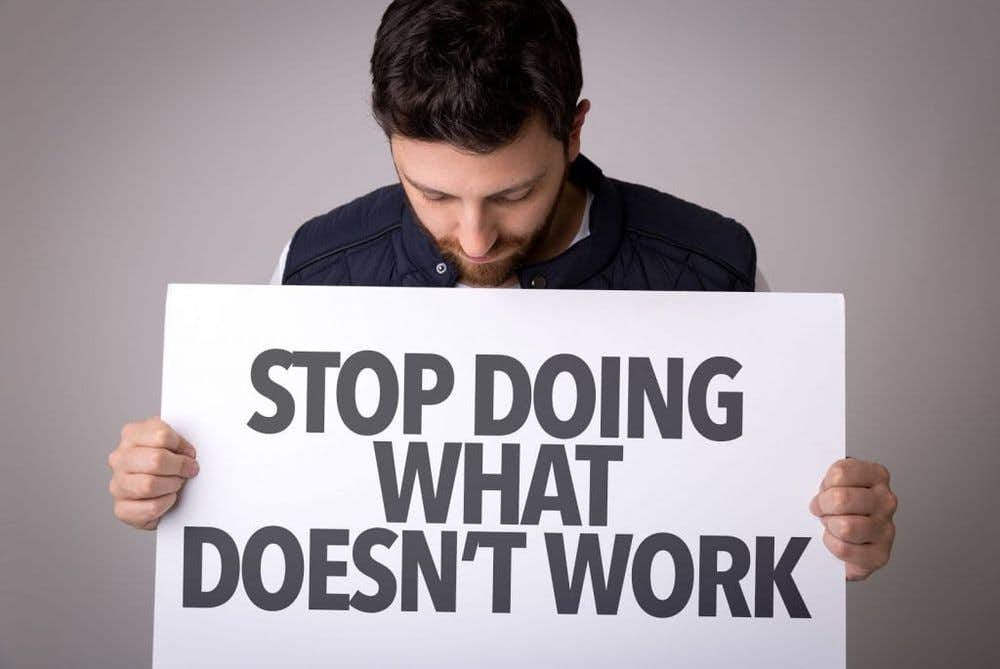September 9th, 2019

“You leave old habits behind by starting out with the thought,
‘I release the need for this in my life’.”
— Dr. Wayne W. Dyer
Do you struggle with a bad habit? If so, and you are looking to make a change, enlighten yourself…
According to medical-dictionary.com, a bad habit is defined as, “a patterned behavior regarded as detrimental to one’s physical or mental health, which is often linked to a lack of self-control”.
There are all types of bad habits, but some of the most common examples may include tobacco use, overuse of alcohol or other substances, excessive shopping, nail-biting, overeating, “junk food” consumption, procrastination, and overindulgence in social media.
Some bad habits are behaviors we’ve developed slowly over a long period of time and perhaps have become second nature to our everyday lives. Others, however, may be utilized as a new coping mechanism or distraction from unpleasant thoughts or emotions. However long we’ve exposed ourselves to the behavior at hand, it can easily block us from the necessary tools or time necessary to live each day to its fullest potential.
In his book, The Power of Habit, Charles Duhigg describes the state in which every bad habit forms: the “habit loop”. Duhigg explains that “the loop consists of a cue or trigger, routine and then reward”. This cue/trigger will then encourage the brain to operate on what Duhigg describes as “automatic mode”, wherein you find your body grabbing for that cigarette or biting your nails without conscious thought to do so. This functioning is made in the basal ganglia part of the brain and ultimately leads to decision-making that almost feels like it is no longer a decision, whether it be “good” or “bad”.
When a behavior is repeated over and over again, a neural pathway is activated in the brain, making it much easier for more repetition. Though once thought to be between 20 and 21, recent research led by a team at the University College London suggests that it takes an average of 66 total days to create a habit. Individuals with greater prospective memory can develop a habit even faster.

According to the Herzliya Medical Center, “the most dangerous habits are those, who were obtained at a relatively immature age and to get rid of which a person is not capable of. Such habits cause considerable damage to human existence - loss of potential and motivation, premature aging of the human body, and the acquisition of diseases of various kinds.”
Whether the bad habit you hope to get rid of is significant or minute, there is hope in freeing yourself from its everyday indulgence. WebMD has created an easy, three-step formula to be free of any behavior that you feel is negatively affecting your life…
Make it conscious. The first step to any problem is usually to acknowledge its presence in our reality. Furthermore, this step is intended to go a little deeper and do some investigating into why the bad habit exists.
As it states on WebMD’s website, “the first step is to figure out when—and why—you bite your nails, crack your knuckles, or engage in any other bad habit”. During this self-reflection, we can perhaps recognize any associations it may have to further understand the compulsion, whether it be stress, sadness, or boredom. New York City psychiatrist Susan Jaffe, MD, suggests that “figuring this out” may enable you to find the ability to stop the habit altogether.
Put it in writing so it really sinks in. This practice of “logging it” comes from clinical psychologist Janet L. Wolfe, Ph.D. When you’ve determined the associated feelings or thoughts connected to the bad habit, it undoubtedly makes the bad habit more conscious to you.
Wolfe suggests logging the habit behavior for a minimum of one week. Once it’s been documented, reflect on the information you’ve gathered. When you feel like you’ve determined the habit’s triggers, create a pros and cons list for the behavior to better understand its impact on your well-being.
Bait and switch. This final step suggests finding a temporary healthier behavior to replace your bad habit with. Some examples include gum chewing for quitting smoking, and exerting a slow exhale for replacing regular throat clearing.
It is important to develop an awareness and understanding of the underlying associations of the bad habit before the “bait and switch”, as heading straight for a temporary replacement will typically serve only as a temporary solution.
The key is to ultimately learn to deal with and find healthier alternatives for coping with the emotions and/or thoughts associated with the behavior. If you discover that your habit is related to high-stress levels, utilizing de-stressing coping mechanisms such as meditation can assist in permanently resolving the behavior.

Try to have patience with yourself as you embark on the steps necessary to break a bad habit and replace it with more positive behavior. Remember, while it takes an average of 66 days to develop a bad habit, the same amount of time is required to develop a good one.
At Clarity Clinic, we have highly trained staff who specialize in therapy and psychiatry services. To learn more about how we can support your mental health, call Clarity Clinic at (312) 815-9660 or schedule an appointment today.
Resources:
Our Services
Virtual/Online CarePHP and IOPAdult PsychiatryChild & Adolescent PsychiatryAdult TherapyChild & Adolescent TherapyCouples CounselingFamily TherapyGroup TherapyPsychological TestingTranscranial Magnetic Stimulation (TMS)